
The Sansevieria trifasciata, or snake plant, is a fascinating houseplant with a unique flowering cycle. Many enthusiasts eagerly anticipate the appearance of its blooms. So, what is the significance of the snake plant’s flowers? And is it a good thing when it flowers?
Signs Your Snake Plant is About to Bloom
The snake plant’s flowering cycle is not set in stone and is largely influenced by environmental factors such as light, temperature, and humidity. Typically, the plant blooms during the fall and winter seasons. However, not all snake plants will flower, and only those that are mature, usually over five years old, are more likely to do so.
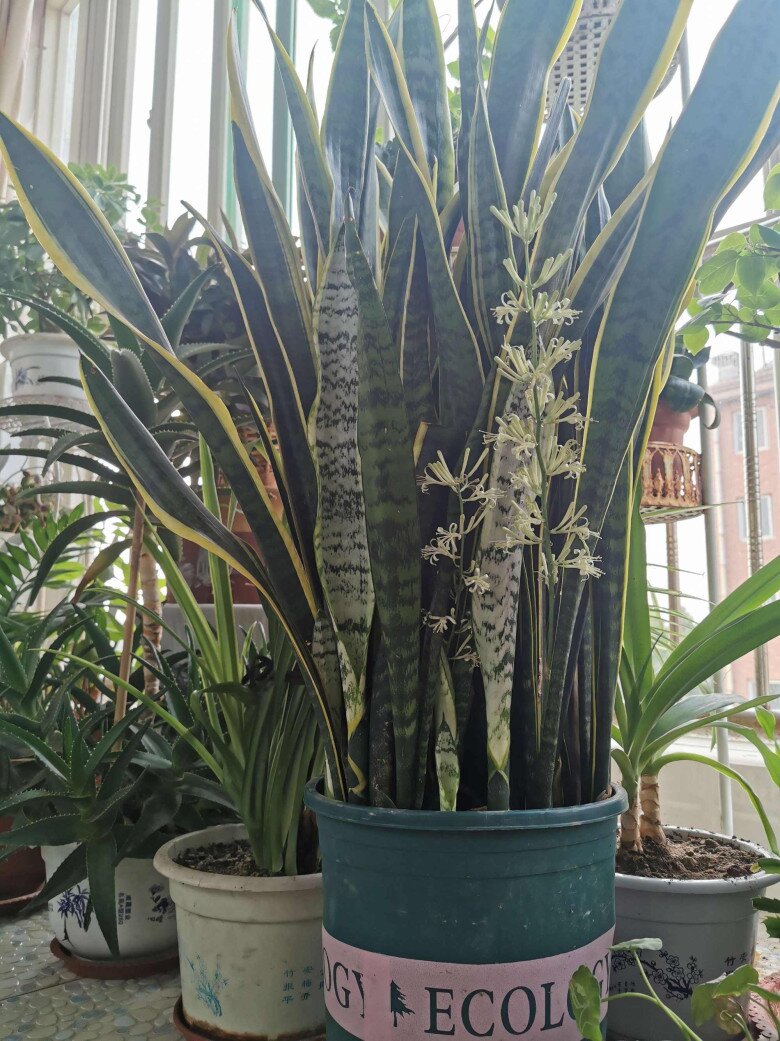
The blooming period of the snake plant’s flowers is brief, lasting only about one to two weeks. After they wither, the flowers quickly fade. Snake plant flowers are typically made up of small, individual blooms, predominantly in pale pink, white, or light green, with yellow stamens. Interestingly, these flowers emit a subtle fragrance, akin to the enchanting scent of a lady.
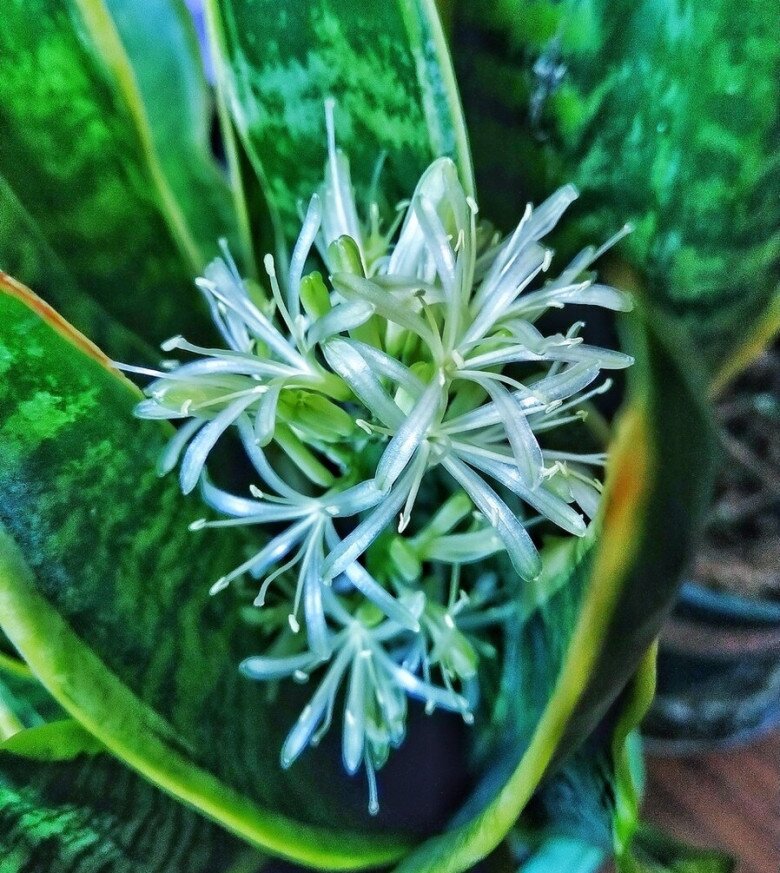
Before the snake plant blooms, it may exhibit the following signs:
– Increased leaf production: The plant rapidly produces new leaves, sometimes up to 2-3 leaves in a short period. This growth spurt is accompanied by the formation of larger leaves compared to its previous growth.
– Fading leaf color: Prior to flowering, the leaves of the snake plant tend to turn lighter, taking on a pale green or pale yellow hue. They also feel softer to the touch.
– Swelling at the base of the plant: As the snake plant prepares to flower, the top of its stem may curve downward, forming a swelling that resembles a heart shape.
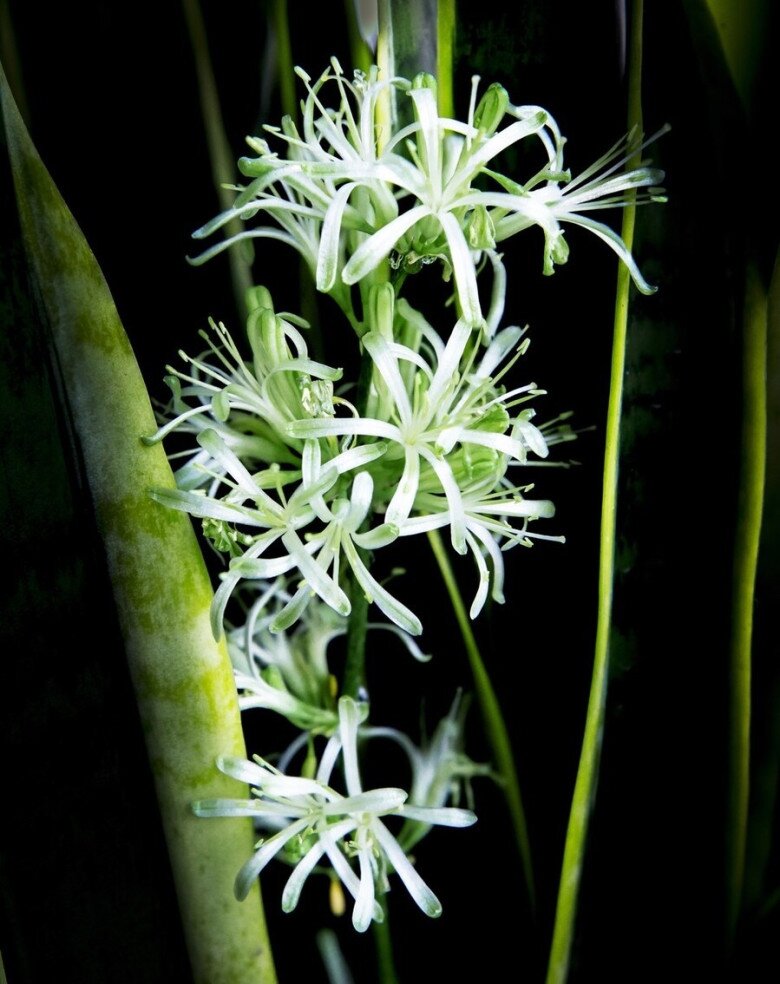
Is a Flowering Snake Plant a Good or Bad Omen?
Some people believe that a flowering snake plant is a cause for celebration. Since the snake plant rarely blooms, witnessing this event gives its caretaker a sense of accomplishment and reward for their patience and care.
In ancient beliefs, because the snake plant does not flower frequently, when it does, it is considered a positive omen. This suggests that the homeowner will soon encounter good fortune, smooth sailing in their endeavors, robust health, and an influx of wealth. Additionally, the blooming of a golden snake plant holds even greater significance in feng shui, as the color gold symbolizes prosperity and nobility.
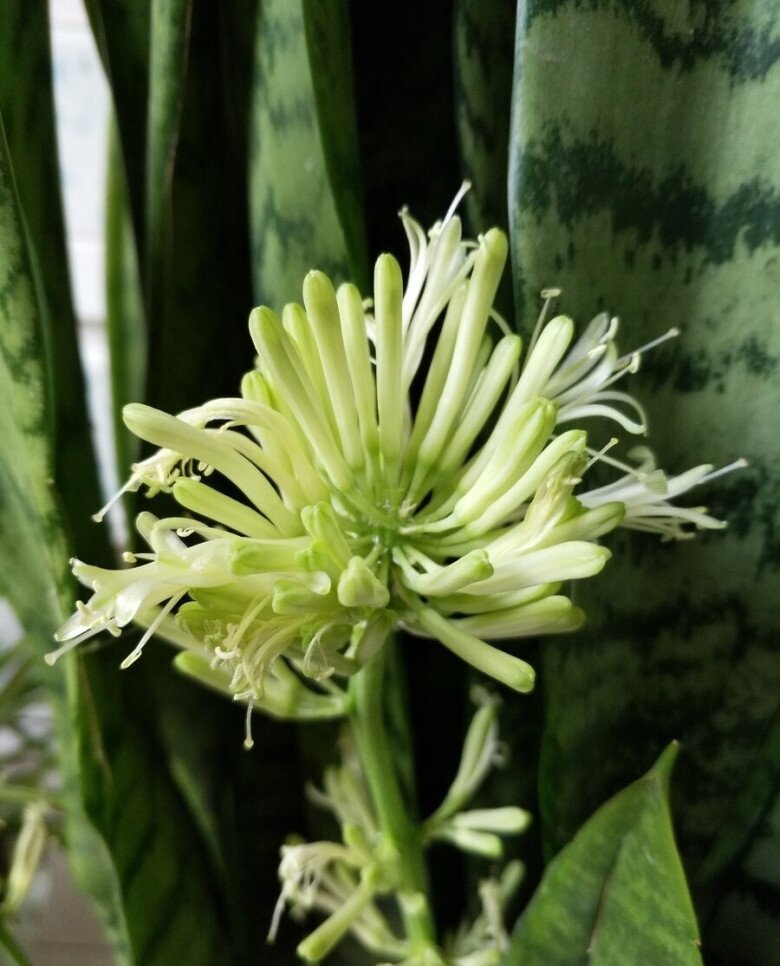
Furthermore, the snake plant is known for its longevity and air-purifying abilities, contributing to the well-being of its surroundings. Thus, its flowering can be seen as a sign of robust health and a healthy environment. This resilient plant also symbolizes courage and strength, encouraging you to face life’s challenges head-on without faltering.
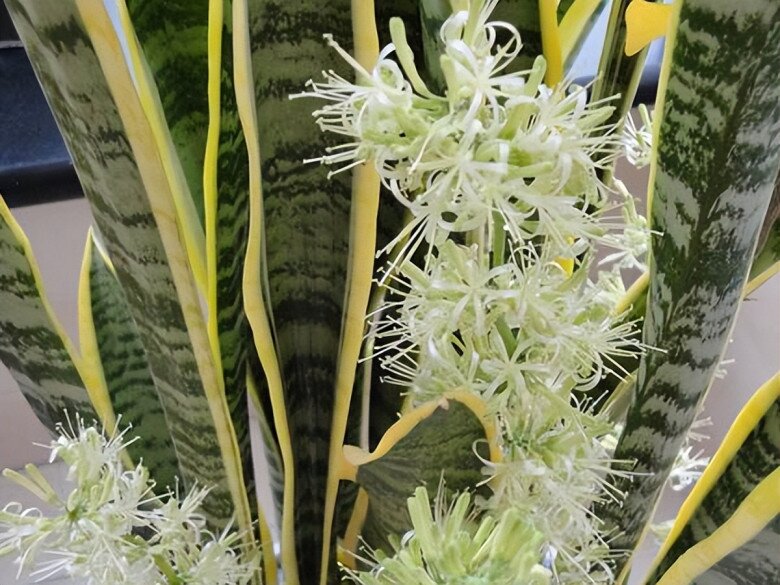
However, the flowers of the snake plant may not always live up to expectations. Upon first glance, you might be disappointed by their modest appearance. Additionally, the flowers produce a sticky substance that can be challenging to clean if it drips.
Moreover, the plant expends a significant amount of energy to produce flowers, which can leave it weakened. Its leaves may become softer, and the veins on the leaves may become less prominent, impacting the plant’s overall aesthetics and growth. Consequently, some believe that a flowering snake plant is not an entirely positive occurrence and recommend pruning the flower stalks to promote healthier and more robust growth.
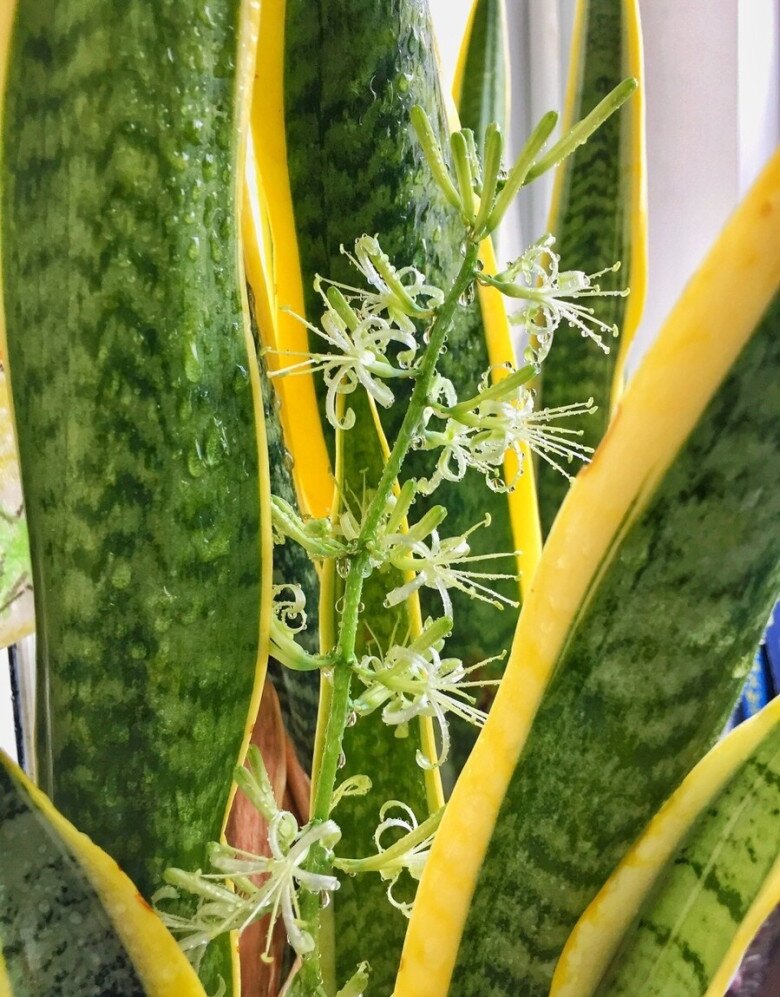
Encouraging Your Snake Plant to Bloom
Although flowering can be taxing on the snake plant, promptly removing the flower stalks after they wither can minimize its impact on the plant’s health. If you wish to experience the joy of witnessing your snake plant bloom and inviting good fortune, consider the following care tips:
– Ensure sufficient sunlight: Snake plants thrive in bright, indirect light. While they can tolerate low-light conditions, they tend to grow faster and flower more readily when exposed to sunlight. However, avoid placing them in direct sunlight, as this can scorch their leaves.
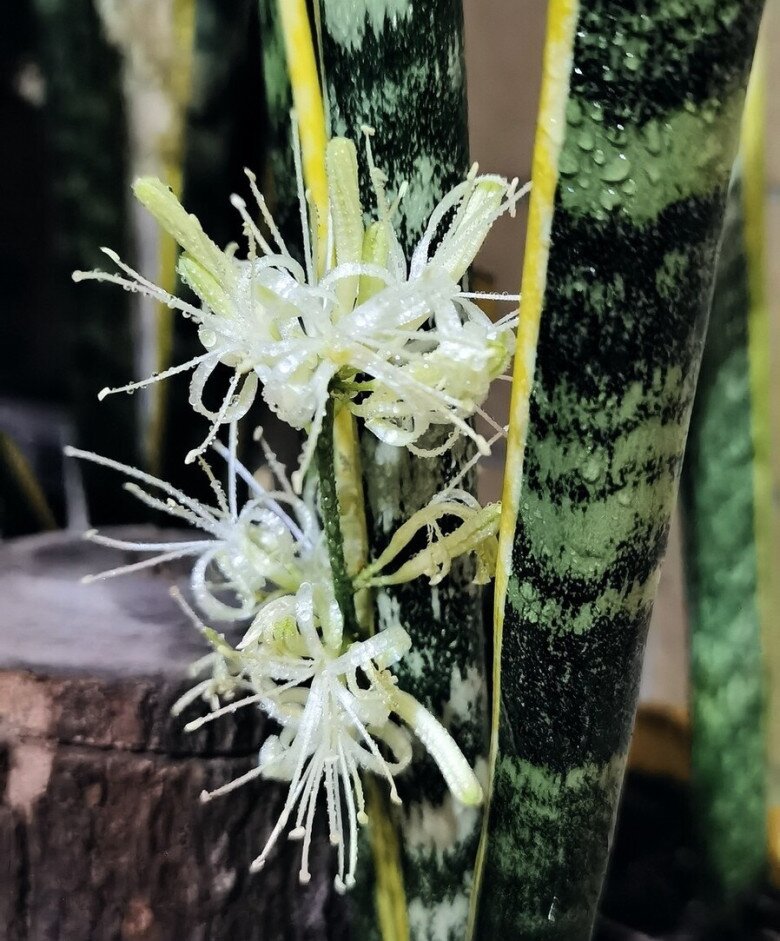
– Proper fertilizing: Contrary to popular belief, snake plants benefit from fertilization. While they can survive without it, they may grow weakly, with thin, fragile leaves. To promote healthy growth and encourage flowering, fertilize your plant about once every two weeks with a specialized fertilizer like Huaduoduo No. 2.
– Control water intake: Overwatering is a common pitfall that can lead to root rot in snake plants. Due to their water-storing capabilities, they don’t require frequent watering. Allow the soil to dry out between waterings.
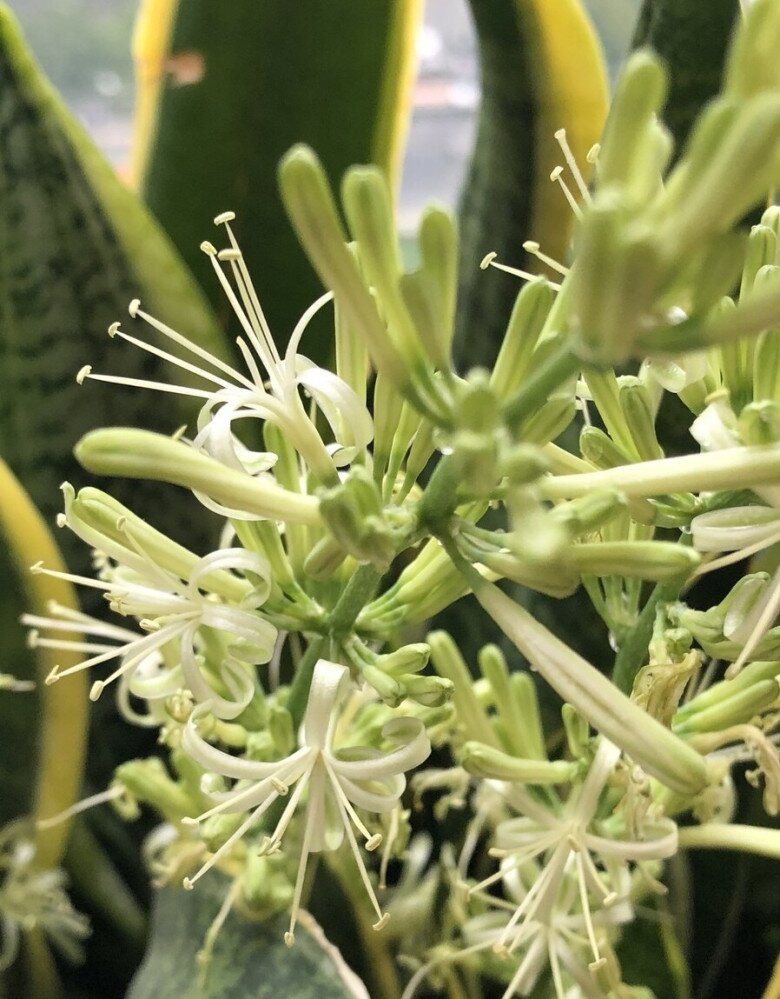
– Annual repotting: Snake plants benefit from being repotted into fresh soil and a larger container annually. A confined root system can hinder the plant’s growth, resulting in less robust leaves. Repotting and refreshing the soil ensure adequate space and aeration for the roots.
The Best 3 Drinks for Your Snake Plant: Watch it Thrive with These Affordable Liquids
Introducing the three magic elixirs that will transform your Snake Plant into a vibrant and lush masterpiece! With these potent potions, your plant will flourish like never before, sprouting new shoots and boasting thick, green leaves. Even the oldest of Snake Plants will be infused with a renewed vitality. Uncover the secrets to this botanical wonder and watch your plant thrive!






































